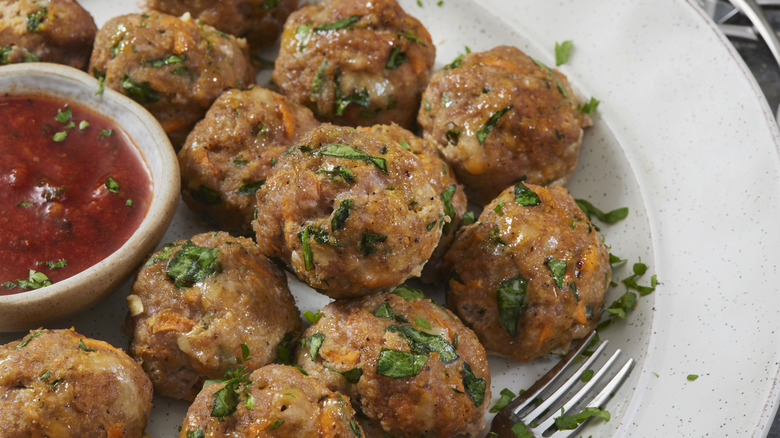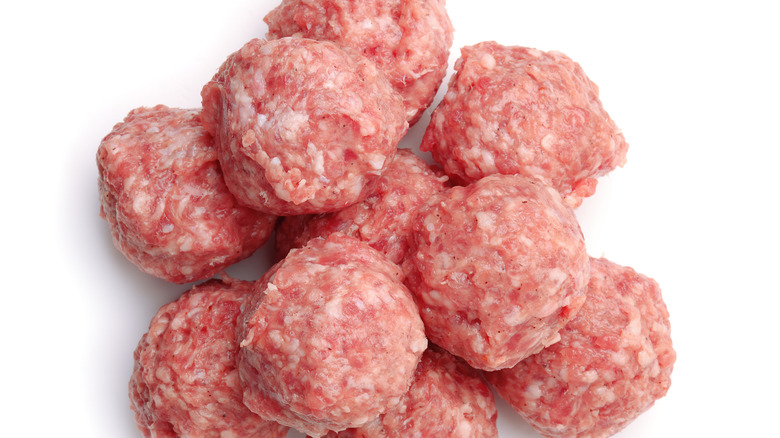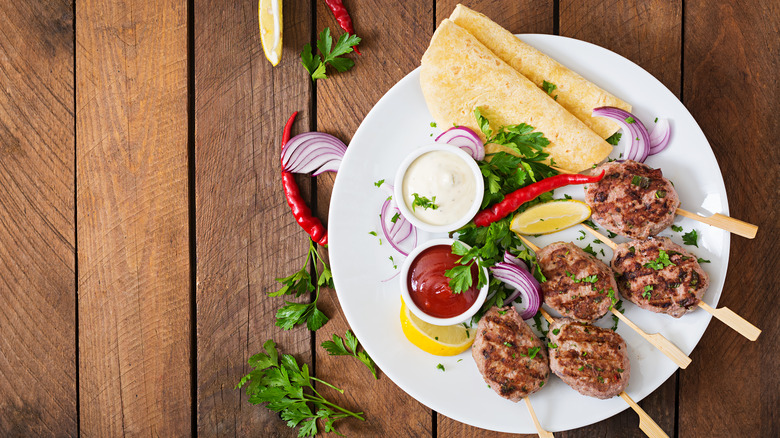The Ingredient To Add A World Of Flavor To Turkey Meatballs
We feel your pain. You're craving meatballs, but all the beef, bread crumbs, and cheese that go into Italian-style meatballs has you looking for a leaner alternative. So, you go with ground turkey and omit the bread crumbs and cheese. But, what you're left with is a dense, dry, and, let's face it, bland orb of meat that just doesn't scratch that itch. Turkey certainly has plenty of protein, a moderate caloric density, and is an excellent source of essential nutrients such as iron, zinc, and B vitamins. But, it is not known for being the world's most flavorful meat. That said, ground turkey can form the base of a great, lean meatball once punched up with an ingredient most people already have on hand: cumin.
While bread crumbs and cheese can indeed up the flavor and succulence of turkey meatballs, they do raise the richness, which many people are trying to avoid with turkey. That's why low-calorie herbs and spices make such a great addition to turkey meatballs, and cumin is one of the most recognizable, boldest, and most-common spices in the modern culinary lexicon.
Making your meatballs
To make your cumin-spiced turkey meatballs, you don't need to possess extraordinary culinary ability, just a willingness to get your hands a little messy. A good rule of thumb is to add between 1 and 2 tablespoons of cumin for every pound of ground turkey. This will give your meatballs a wonderfully-robust flavor. You can, of course, adjust to your own taste. And, in addition to the cumin, you'll want to add salt at the very least, and black pepper — fresh ground is always preferred — for a bit more bite. Now comes the time to play with your food, as mixing the spices and ground turkey is easiest accomplished with clean hands. But don't sweat it if this part isn't for you; you can always use a sturdy rubber spatula or the paddle attachment of a stand mixer to combine the ingredients.
Time to portion the meatballs, which can be done by hand. But remember: For even cooking, consistency is key, so all of the meatballs should be roughly the same size. Two inches in diameter makes for a nice medium-sized meatball that works in lots of different applications, and a small ice cream scoop, spoon, or other implement can help you portion. Once you've got all of your meatballs formed, heat some olive oil in a pan and brown them on all sides. Depending on the size of your pan, you may have to do this in batches to avoid overcrowding and undercooking.
Taking meatballs beyond Italian cuisine
A question that may arise is how to use the cumin-tinged turkey meatballs. They are indeed a departure from the Italian-style meatballs that most people are used to. Cumin isn't commonly found in many Italian dishes, and these meatballs might feel out of place on top of a plate of spaghetti marinara. But cumin is right at home in many different cuisines, so you may want to shift your focus.
Cumin, for most Americans, is likely the most evocative of a steaming bowl of chili. But that's only part of the story as cumin is one of the hallmarks of Tex-Mex cuisine, found in enchiladas, chimichangas, nachos, and more. That said, you may want to take your meatballs in a Tex-Mex route, by wrapping them in a tortilla with zesty salsa or atop a salad with plenty of vibrant vegetables to balance out the savory notes.
Another cuisine that makes prominent use of cumin is that of the Middle East. Next time you bite into a falafel, ask yourself what it is that you taste. It is likely cumin. Speaking of, these turkey meatballs would make a great replacement for falafel atop a warm pita with tzatziki, lettuce, tomato, and red onion.
The real test though, is to try out these flavor-packed turkey meatballs and decide according to your taste how they might best be eaten. With every cumin-packed bite, you'll be amazed at how flavorful turkey meatballs can be.


